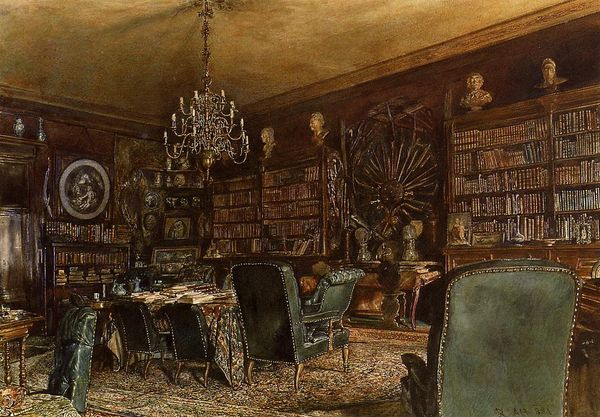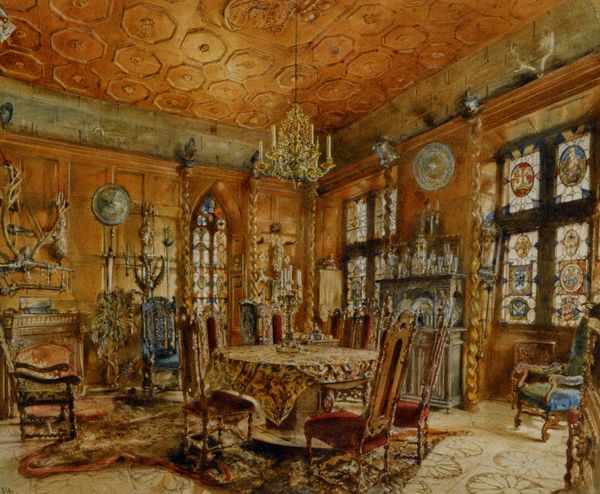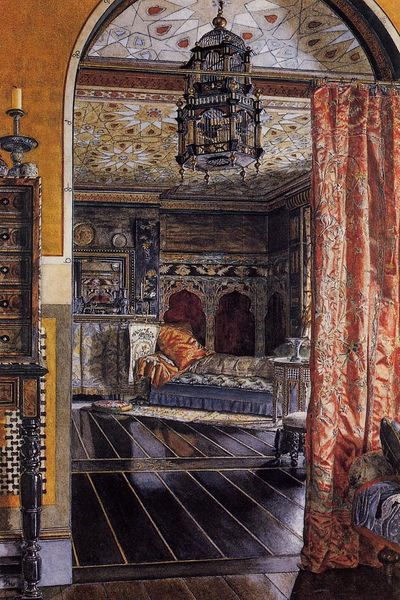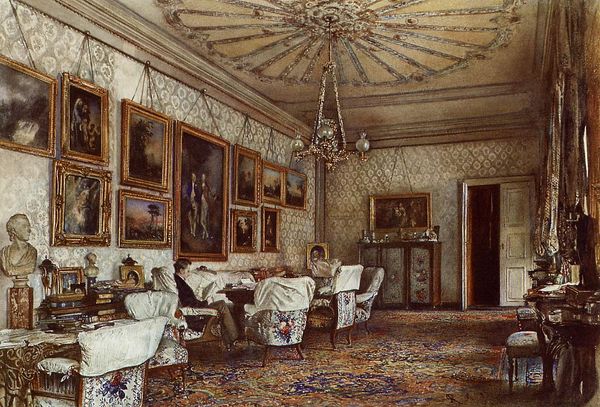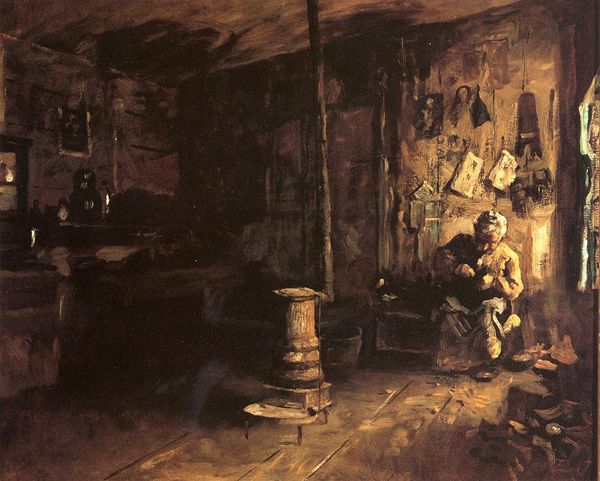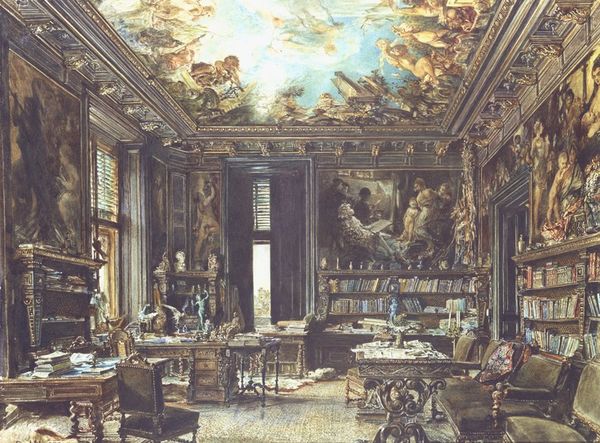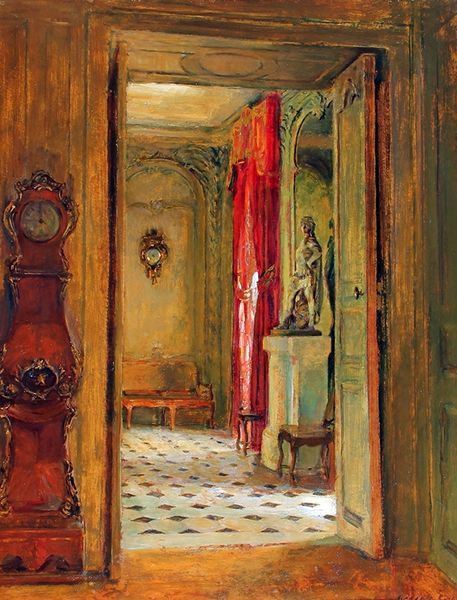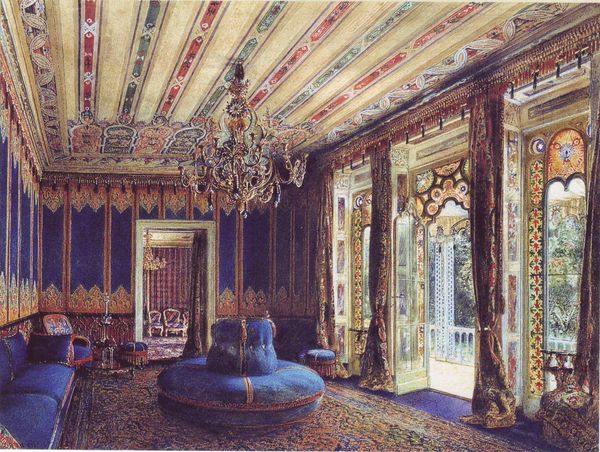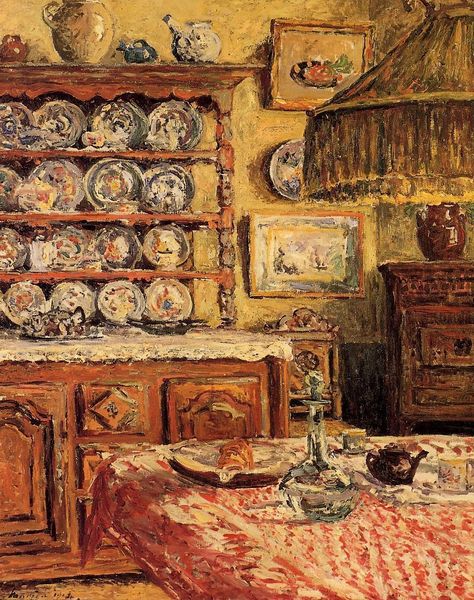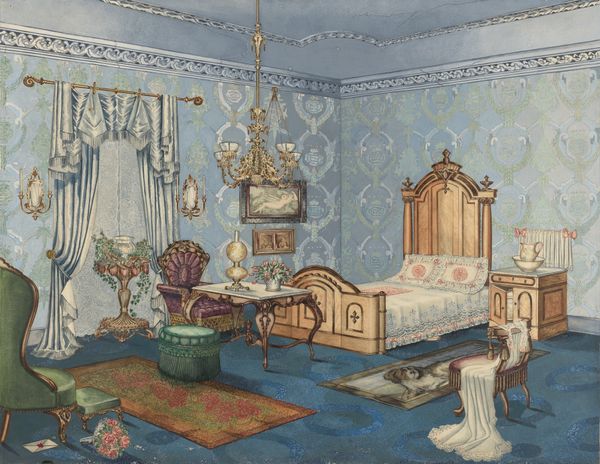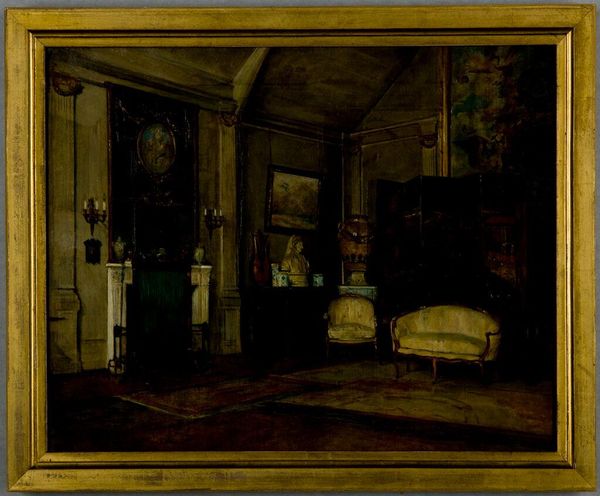
painting, oil-paint
#
portrait
#
urban landscape
#
architectural landscape
#
painting
#
oil-paint
#
sculpture
#
furniture
#
holy-places
#
urban cityscape
#
genre-painting
#
academic-art
#
realism
#
building
Copyright: Public domain
Editor: Here we have Rudolf von Alt’s "The Office of Count Lanckoronski, Vienna" from 1881, painted in oil. It's remarkably detailed and cluttered; all of the items packed in make it hard to parse initially. It gives a sense of Victorian excess. What's your take? Curator: Clutter is an apt description. For me, it speaks volumes about production, consumption, and class. Look at the sheer number of objects, reflecting Vienna's thriving industries during the late 19th century. Editor: Industries? I was just thinking about it aesthetically! Curator: Consider the labour required to create these items – the furniture, textiles, artwork. Each piece represents hours of work, skill, and the availability of resources, and ultimately, a financial transaction. And who benefits? Not just the Count, but the countless artisans who are part of the productive output that created this bourgeois interior. Editor: So, you’re saying it’s not just about how it looks, but about the societal structure behind it? Curator: Exactly. Even the medium – oil paint – connects to larger systems of extraction, refinement, and distribution. Oil paint was increasingly industrialized during this period. How does its commercial availability change artistic practice, compared to artists creating their own pigments? Editor: It allowed for broader experimentation? Increased artistic production for a market? Curator: Precisely! Alt isn't just painting a room, but unintentionally chronicling the material conditions of 19th-century Viennese society. These luxurious displays highlight a society enabled through both industry, and labor, of many kinds. Editor: I never considered how even a genre painting could be a statement about materialism. That's an eye-opening way to consider art!
Comments
No comments
Be the first to comment and join the conversation on the ultimate creative platform.
